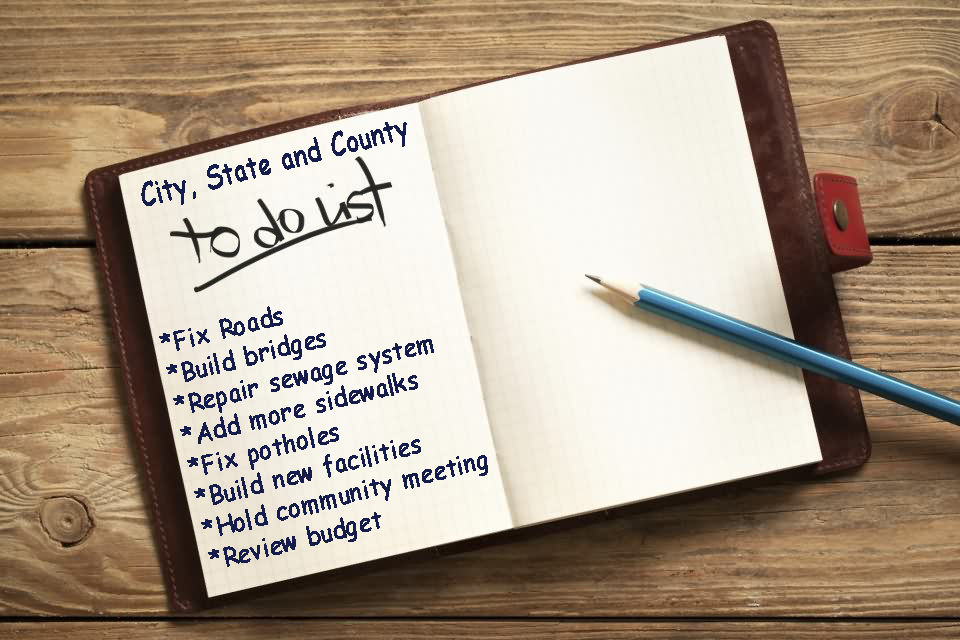
City, county and state officials are watching a gathering storm carefully. It’s potentially ominous… and it is capable of making a direct hit on any governmental jurisdiction in the U.S.!
A backlog of deferred maintenance threatens to wreak havoc on credit ratings and create enough chaos to generate dangerous scrutiny for elected officials. There are recent reports of billion-dollar backlogs of deferred maintenance at all jurisdictional levels and few, if any, states are exempt. This is not good for government – and especially not good for taxpayers – because the problem will only escalate with time.
 Deferring maintenance is somewhat like the “check engine light” blinking on a vehicle’s dashboard. The car or truck may be fine for a few days but eventually it will require service. And, if ignored, the vehicle will cease to function and completely shut down. Failure to address deferred maintenance is not only dangerous; it is foolish and very costly. Elected officials may not yet see blinking lights on a dashboard but they are well aware of the problem. Taxpayers, however, may be totally in the dark when it comes to this issue.
Deferring maintenance is somewhat like the “check engine light” blinking on a vehicle’s dashboard. The car or truck may be fine for a few days but eventually it will require service. And, if ignored, the vehicle will cease to function and completely shut down. Failure to address deferred maintenance is not only dangerous; it is foolish and very costly. Elected officials may not yet see blinking lights on a dashboard but they are well aware of the problem. Taxpayers, however, may be totally in the dark when it comes to this issue.
According to a recent report, every $1 spent on maintenance can save up to $10 in future repair. The problem is that many elected officials simply cannot find the $1 to spend.
Maintaining municipal facilities, public assets, streets, etc. is one of the least popular ways to allocate funding. As budgets grow tighter and resources become scarcer, it is very easy – but never wise – to defer maintenance costs. If the choice is to spend money on a popular project, such as a park or library, city leaders usually choose the more popular project. The eventuality of a fiscal crisis increases every time maintenance on public assets is deferred.
Kansas City provides a frightening example of what can happen when a backlog of deferred maintenance becomes so large it threatens the city. When the current mayor and city manager took over in 2011, they were confronted with a massive backlog of deferred maintenance. City roads, public facilities and bridges had been decaying for years and time had run out. Yet, when city officials proposed a $1 billion dollar bond proposal to remedy the situation, taxpayers learned that credit agencies had downgraded Kansas City’s credit ratings. The most common path to funding for deferred maintenance was cut off because the massive backlog had lowered the credit worthiness of the city.
Government’s deferred maintenance represents great potential for a raging storm. Deferred maintenance is classified as debt and as debt obligations increase, so does the price for borrowing money. When cities disregard maintenance responsibilities for public assets, punishment will occur.
Want to know if your city, school district or state is in danger of credit downgrading? It is not all that difficult to determine. Call the Office of Public Information at any jurisdictional level of government and ask for the total amount of deferred maintenance on the books. You’ll learn very quickly whether or not there are problems.
